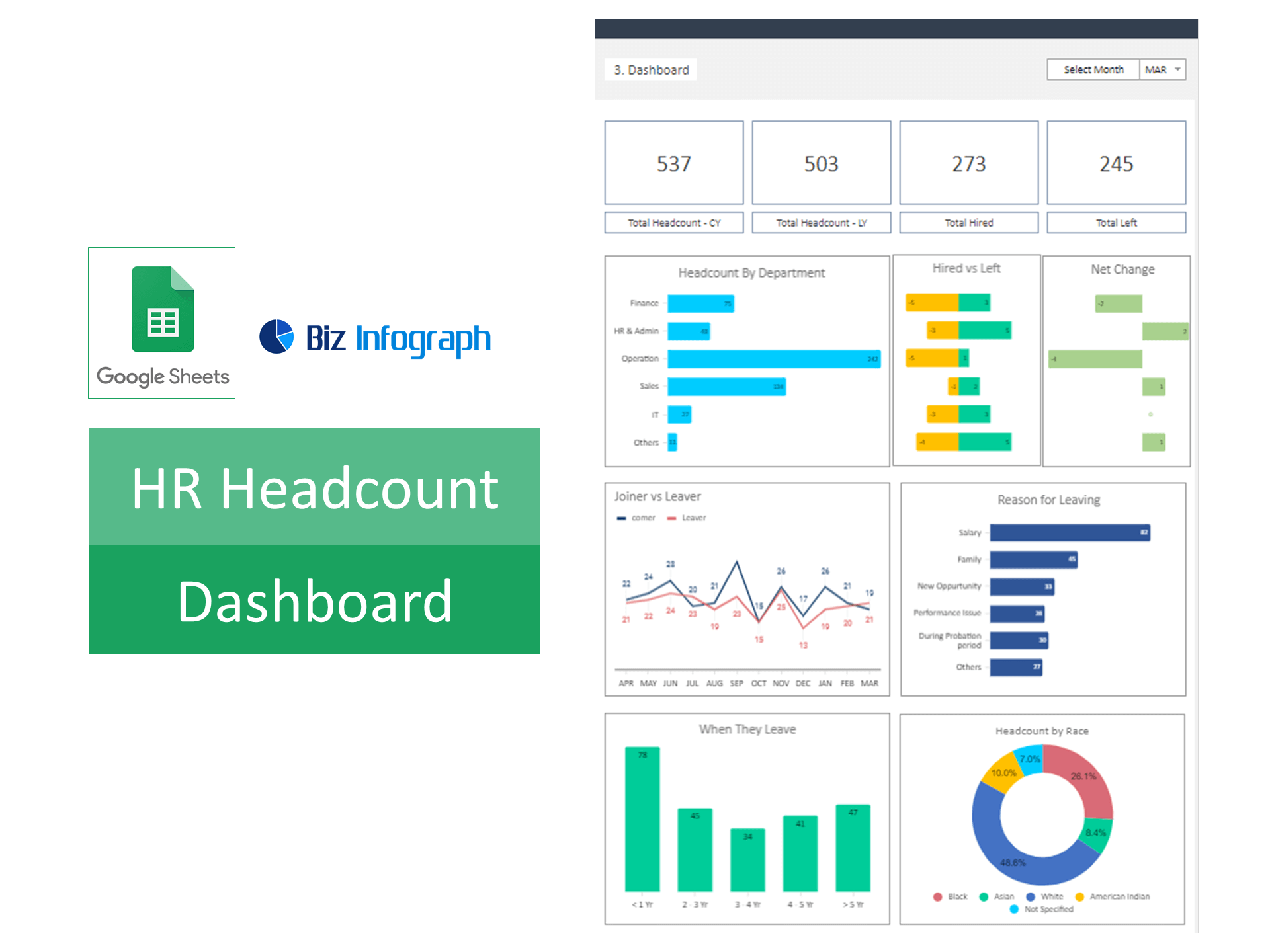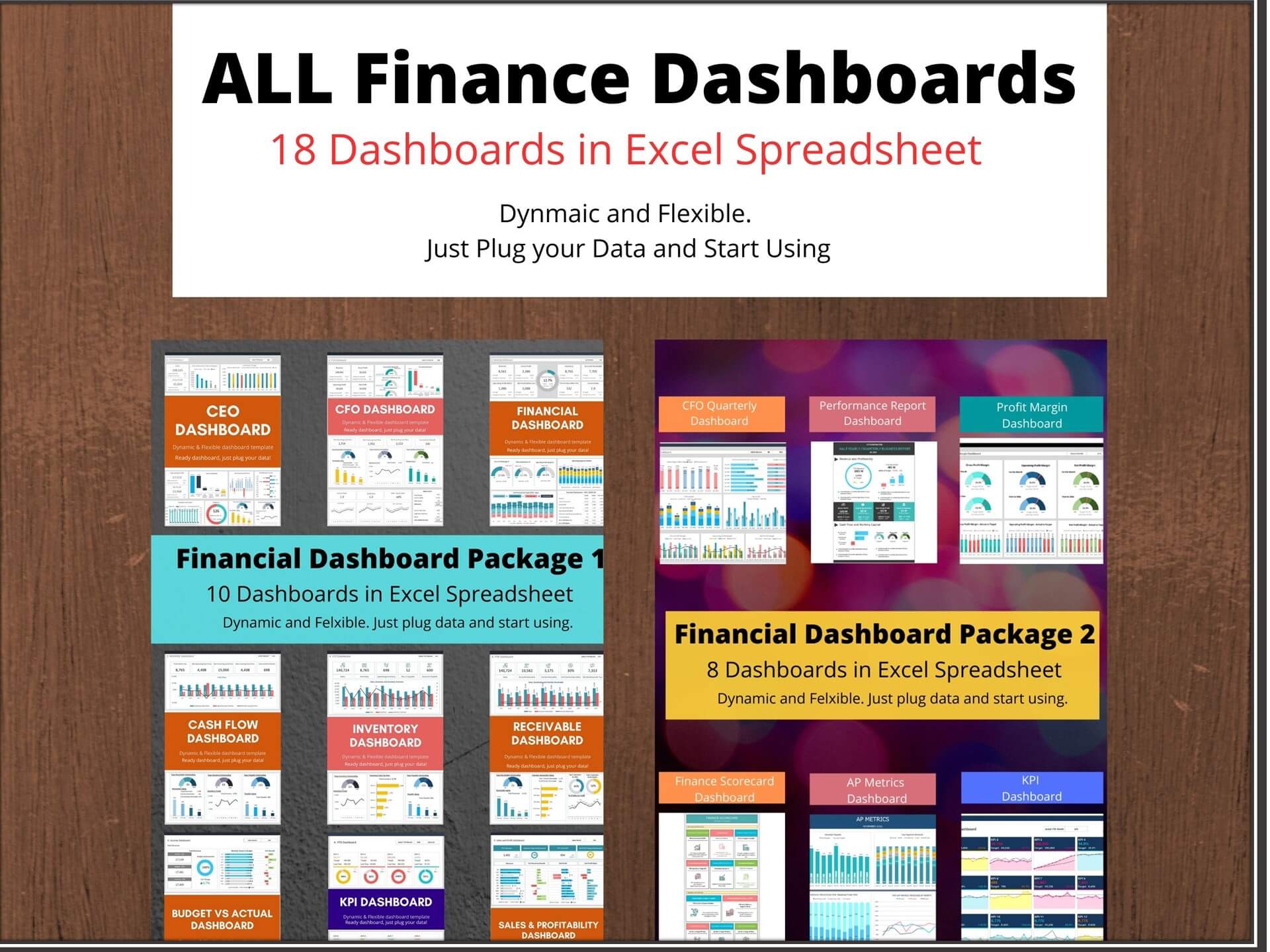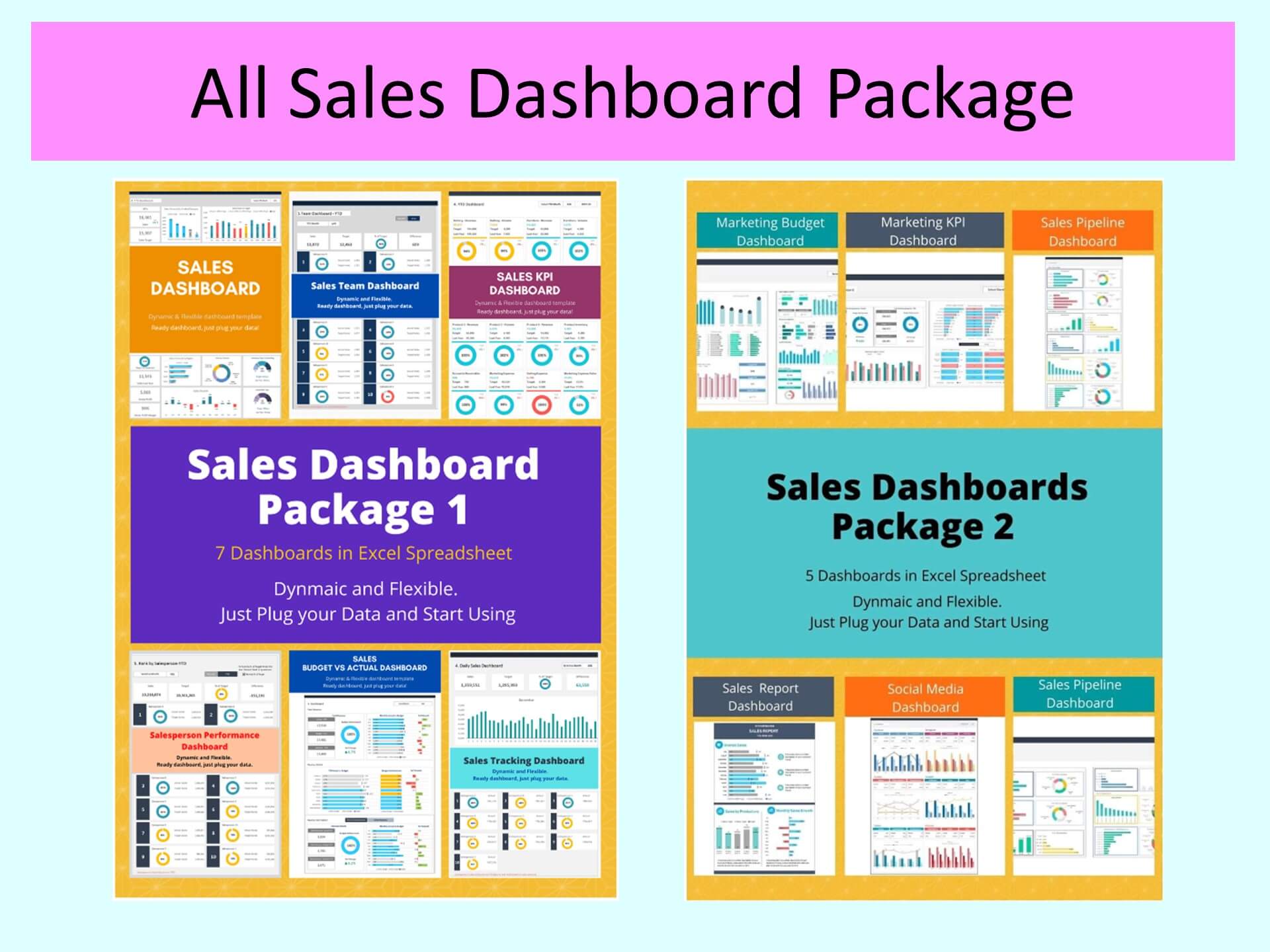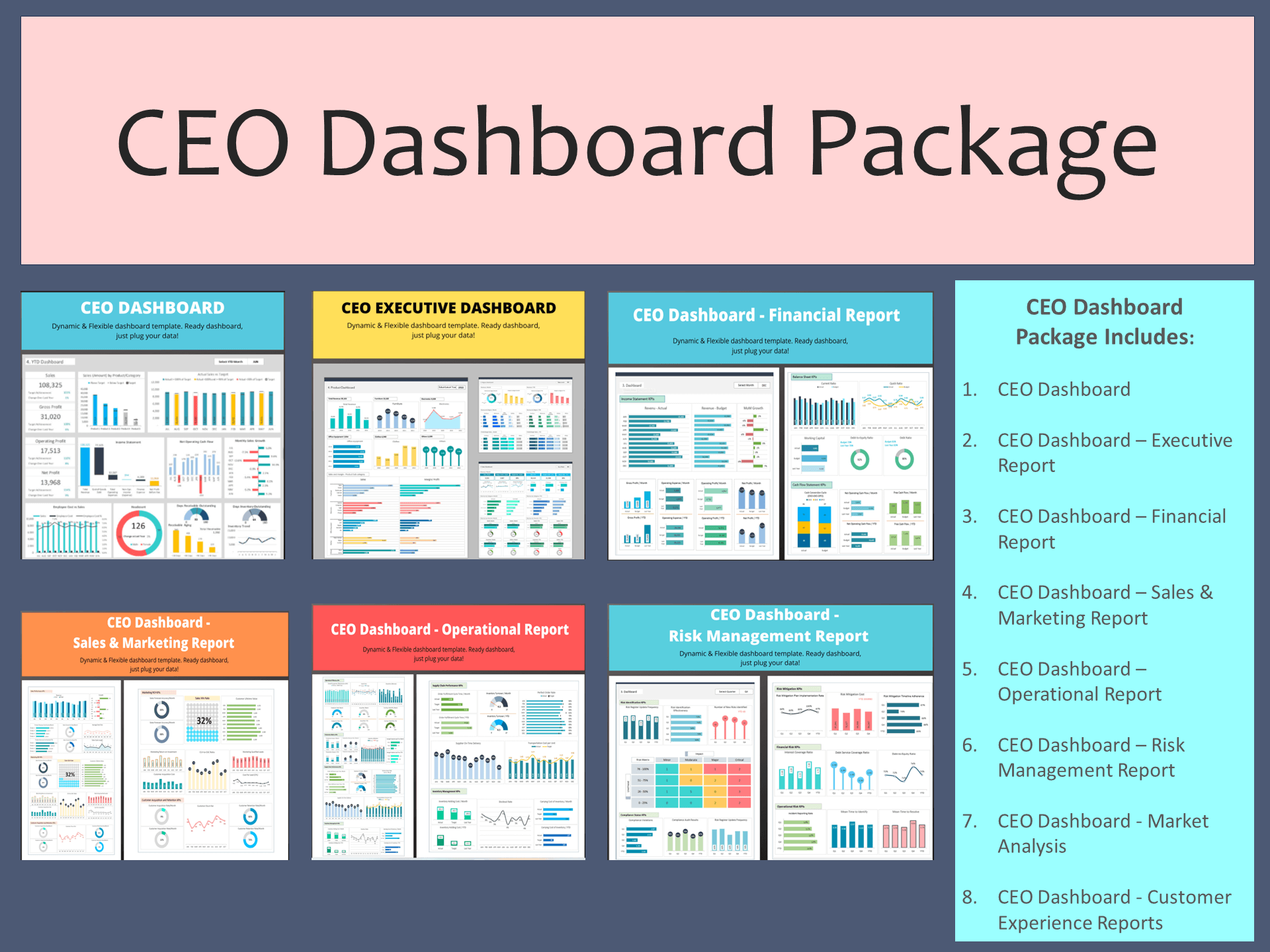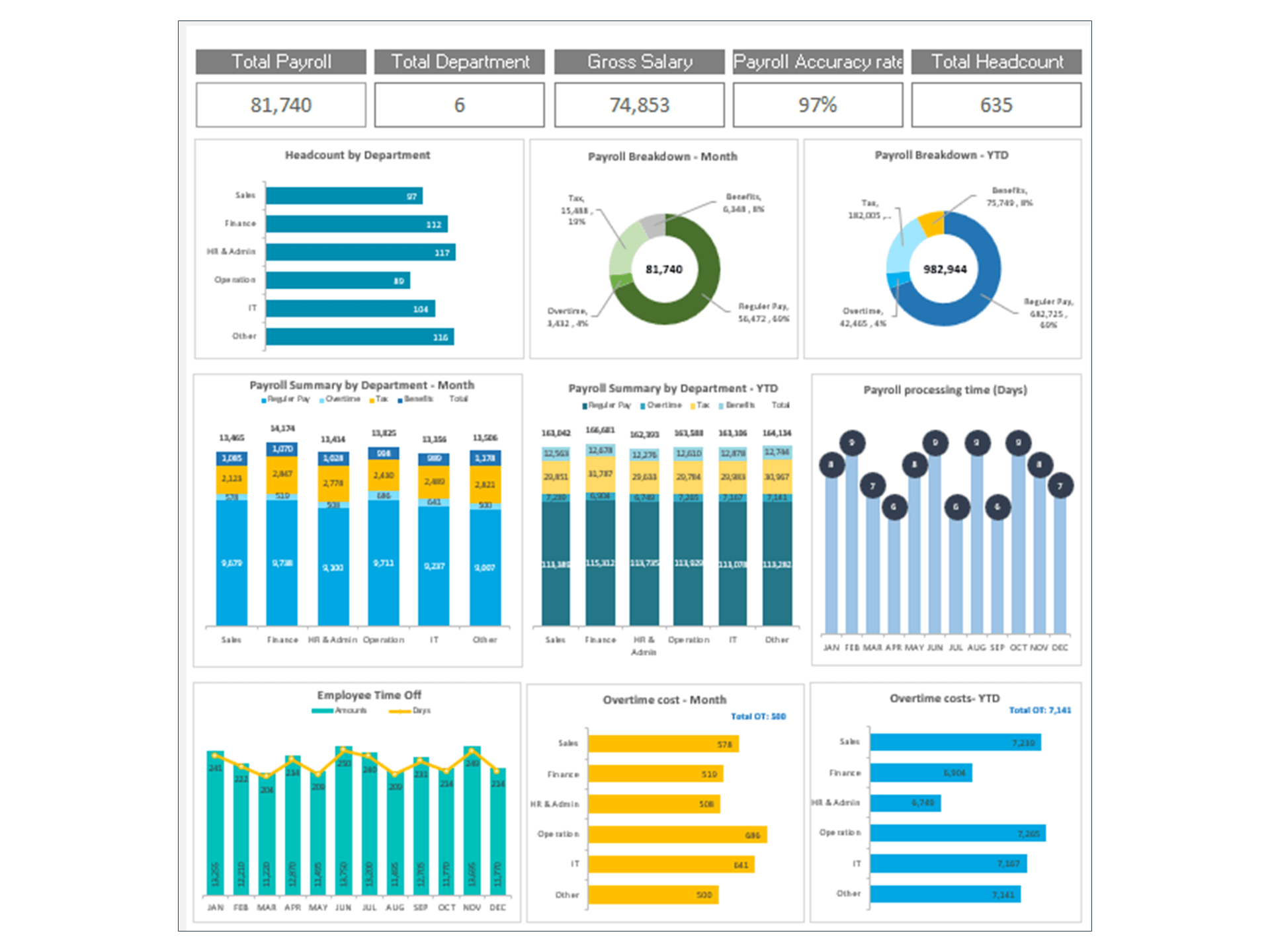HR Headcount Dashboard - Comprehensive People Analytics Dashboard (Excel and Google Sheets)
Introduction to HR and People Analytics Dashboards
The Role of Dashboards in Modern HR Practices
HR and people analytics dashboards are pivotal in transforming workforce management by providing data-driven insights. These dashboards compile and visualize critical HR metrics, facilitating informed decision-making and strategic planning. By integrating various data sources, HR dashboards offer a holistic view of the organization's human capital, enabling HR teams to track employee performance, identify trends, and address workforce challenges effectively. The intersection of HR analytics with a meticulously crafted human resource dashboard empowers HR professionals to harness workforce insights with an unprecedented level of clarity and precision.
Core Components of an Effective HR Dashboard
An effective HR dashboard should encompass a range of elements to offer comprehensive people analytics. Essential components include workforce demographics, critical headcount metrics, number of employees, hires, turnover rates, employee tenure, and diversity metrics. Additionally, key performance indicators (KPIs) such as recruitment efficiency, employee satisfaction, and training outcomes are crucial. A well-structured HR dashboard not only tracks these metrics but also aligns them with the organization's strategic goals, ensuring actionable insights.
Deep Dive into Headcount Analytics
Understanding Headcount Metrics and Their Impact
Headcount metrics provide vital insights into the organizational structure and workforce composition. Key metrics include total headcount, departmental and location-based distribution, and fluctuations over specific periods. Understanding these HR data helps HR professionals manage budgets, plan for growth, and ensure the right balance of skills and personnel within the company. Effective HR analytics aid in identifying headcount changes and trends, predicting future needs, and making informed staffing decisions.
Building a Comprehensive Headcount Dashboard
Creating a comprehensive headcount dashboard involves integrating various data points to reflect the organization's employee distribution accurately. The dashboard should include visual representations of current employee headcount, historical trends, departmental breakdowns, and vacancy rates. Guidelines include using clear, intuitive layouts, ensuring real-time data updates, and incorporating filters for detailed analysis. This enables HR teams to monitor workforce changes dynamically and respond to organizational needs promptly. This also facilitates to develop diversity dashboard.
Talent Management and Employee Tenure Analysis
Crafting an Employee Tenure Dashboard
An employee tenure dashboard tracks the length of service across the organization, providing insights into employee loyalty and career progression. It should highlight KPIs like average tenure, distribution of tenure lengths, and correlations with job satisfaction and performance. This dashboard helps HR identify retention patterns and potential areas for improvement in employee engagement, career development and recruit strategies.
Utilizing Talent Flow Dashboards for Strategic Planning
Talent flow dashboards visualize movements within the organization, including promotions, transfers, and exits. By analyzing this data, HR can assess the effectiveness of talent management strategies, identify career paths, and ensure leadership succession planning. This dashboard aids the HR department in understanding how talent is developed and retained, informing strategic decisions to foster a supportive and dynamic workplace environment.
Monitoring Turnover and Attrition Rates
Designing Essential People Analytics Dashboards to Track Turnover and Attrition
Effective dashboards for tracking turnover and attrition highlight patterns and root causes of employee departures. They should include turnover rates by department, tenure, and reason for leaving. This allows HR to identify high-risk areas and develop targeted retention strategies, ultimately reducing turnover costs and improving organizational stability.
Analyzing Employee Turnover Data for Retention Strategies
Utilizing turnover and attrition data, HR can develop actionable retention strategies focused on enhancing employee satisfaction and engagement. Analysis should uncover correlations between turnover rates and factors such as job role, manager performance, and employee engagement levels. Insights derived from this data support the creation of more effective, personalized employee retention programs.
Advancing Leadership with Span of Control Dashboards
Implementing a Span of Control Dashboard
A span of control dashboard helps organizations optimize management structures by displaying the number of direct reports per manager and assessing management layers' effectiveness. This dashboard aids in ensuring that leadership is neither too stretched nor too concentrated, promoting more efficient and responsive management practices.
Insights from Span of Control Metrics
Analyzing span of control metrics provides valuable insights into organizational efficiency and leadership effectiveness. It helps identify areas where managers may be overloaded and departments with potential for restructuring. By optimizing span of control, companies can enhance communication, increase employee engagement, and improve overall management quality.
Enhancing Career Development with Promotions Dashboards
Developing a Promotions Dashboard
A promotions dashboard highlights career advancement within the organization, tracking promotion rates, time in position before promotion, and departmental promotion trends. This tool is instrumental in recognizing and fostering talent, ensuring equitable promotion practices, and identifying areas where career development efforts can be intensified.
Leveraging Promotion Analytics for Talent Development
Promotion analytics help HR and management teams to understand and improve internal mobility and career development opportunities. By evaluating promotion data, organizations can ensure fair and transparent talent advancement, motivate employees, and align talent development with business needs.
Integrating KPIs for Comprehensive People Analytics
Selecting KPIs for Your People Analytics Dashboards
Choosing the right KPIs is crucial for effective people analytics. HR should focus on metrics that align with organizational objectives, such as engagement scores, training effectiveness, and performance ratings. Selecting relevant KPIs enables targeted analysis and drives meaningful change within the organization.
Aligning HR KPIs with Organizational Goals
HR KPIs should be closely aligned with broader organizational goals to ensure that HR initiatives contribute directly to business success. This alignment ensures that HR efforts are focused on areas with the most significant impact on organizational performance and employee well-being.
Best Practices and Dashboard Examples
People Analytics Dashboard Examples and Best Practices for HR Team
Showcasing successful examples of HR and people analytics dashboards can provide inspiration and guidance. Best practices include maintaining data accuracy, ensuring user-friendly designs, and regularly updating dashboards to reflect the latest information and trends.
Continuous Improvement of HR Dashboards
HR dashboards should undergo regular reviews and updates to stay relevant and effective. Continuous improvement involves soliciting feedback from users, incorporating new data sources, and adapting to changing HR and organizational needs.
Collaboration and Engagement Through HR Dashboards
Encouraging Team Collaboration with HR Dashboards
HR dashboards can be powerful tools for fostering collaboration within teams and across departments. By sharing insights and data, HR can facilitate open discussions, align team goals with organizational objectives, and enhance collective decision-making.
Fostering Employee Engagement with Dashboard Insights
HR dashboards can also play a crucial role in boosting employee engagement. By transparently sharing metrics related to performance, satisfaction, and development opportunities, HR can encourage employees to take an active role in their career progression and contribute positively to the organization's culture and goals.
You may be interested:
